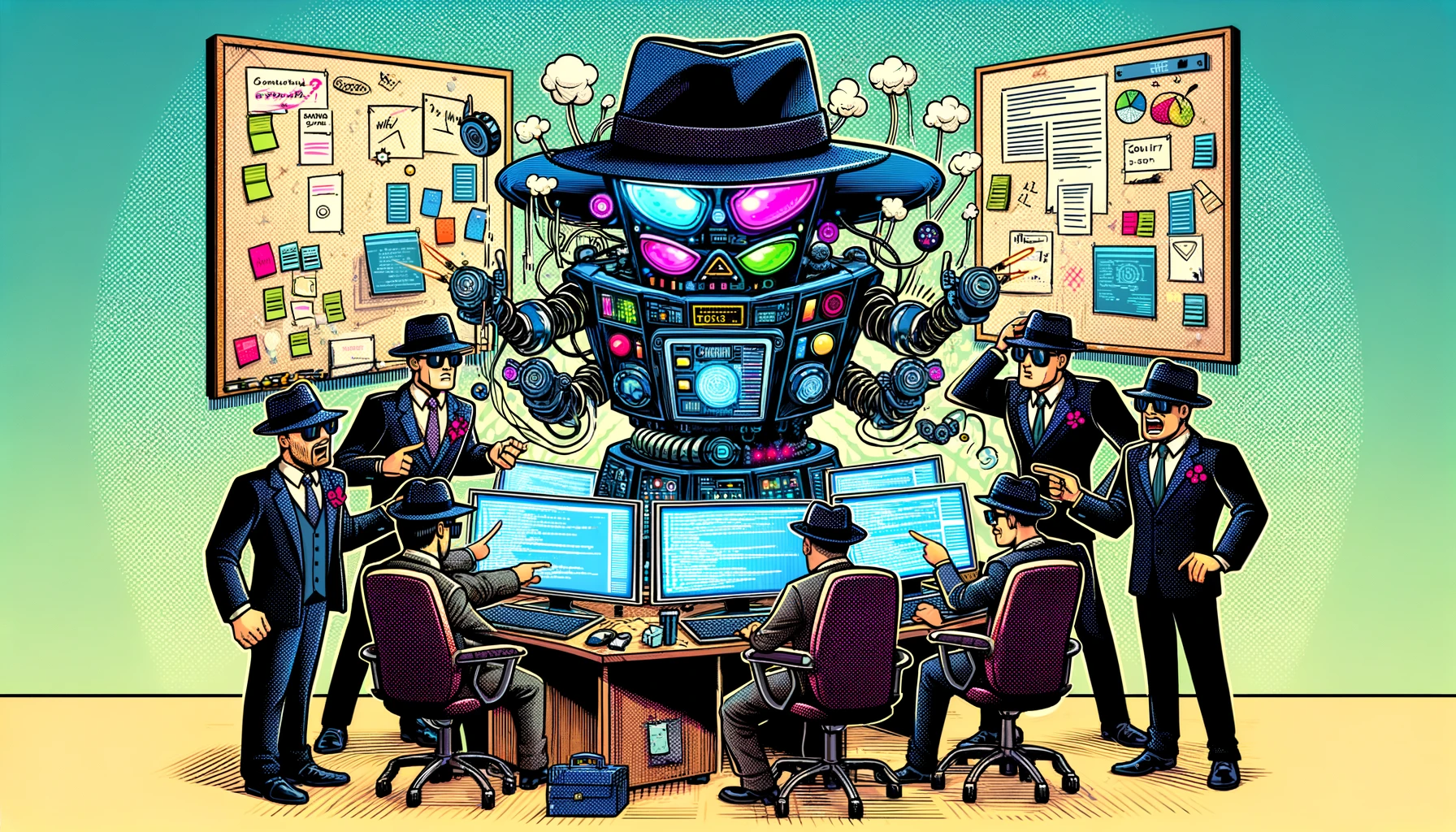
Mob Programming
In the ever-evolving world of software development, collaboration is key. Traditionally, coding has been seen as a solitary activity, with developers often working independently on their tasks. However, the rise of Agile methodologies has brought a greater emphasis on teamwork, leading to practices like pair programming. But what happens when you take pair programming and scale it up? Enter mob programming.
What is Mob Programming?
Mob programming is a practice where the entire team works together on the same code, at the same time, on the same computer. It’s like pair programming, but instead of two people, you have the whole team collaborating in real-time.
The idea is simple: one person, known as the “Driver,” writes the code, while the rest of the team, known as “Navigators,” provides input, suggests ideas, and reviews the work as it’s being done. The role of Driver rotates regularly to keep everyone engaged and to share the workload.
Why Mob Programming?
At first glance, mob programming might seem inefficient. How can five or more people working on the same task be productive? The reality is quite the opposite. Here are some of the key benefits:
-
Quality Over Quantity: With multiple eyes on the code at all times, the quality of the code improves significantly. Bugs are caught early, and design flaws are identified before they become an issue.
-
Shared Knowledge: One of the biggest challenges in any team is the siloing of knowledge. Mob programming naturally breaks down these silos as everyone is involved in every part of the process. This leads to better knowledge sharing and cross-training among team members.
-
Improved Communication: Working together in real-time forces team members to communicate clearly and effectively. It also ensures that everyone is on the same page, reducing misunderstandings and rework.
-
Faster Problem Solving: When a problem arises, you have the collective brainpower of the entire team focused on finding a solution. This often leads to quicker and more innovative problem-solving than working individually.
-
Increased Engagement: Mob programming keeps everyone engaged. There’s no “zoning out” when you’re actively participating in the process. It also creates a more inclusive environment where everyone’s voice is heard.
How Does Mob Programming Work in Practice?
To get started with mob programming, you need to set up a few basic things:
-
One Computer, One Screen: The team gathers around a single computer. If the team is remote, screen-sharing tools can facilitate the process.
-
Clear Roles: Establish the roles of Driver and Navigators. The Driver’s job is to type, while the Navigators guide the development. Rotating these roles regularly keeps everyone involved.
-
A Defined Problem: Mob programming works best when the team has a clear goal or problem to solve. It could be anything from writing new features to debugging issues.
-
Respect and Patience: Working as a mob requires a high level of respect and patience. Every idea should be considered, and team members should listen actively to one another.
Understanding the Driver and Navigator Roles
Central to the mob programming method are the roles of the Driver and the Navigators. Understanding these roles is crucial for making mob programming effective.
The Driver
The Driver is the person who sits at the keyboard and writes the code. However, the role of the Driver is not to make decisions or solve problems independently. Instead, the Driver acts as the team’s hands, translating the instructions from the Navigators into code.
Responsibilities of the Driver:
-
Typing Code: The Driver’s primary job is to write the code as directed by the Navigators. They follow the instructions provided by the team without altering or deviating from the group’s decisions.
-
Listening and Executing: The Driver must listen carefully to the guidance from the Navigators and execute it accurately. This requires focus and attention to detail, as the Driver ensures that the team’s collective ideas are correctly implemented.
-
Clarifying Intentions: If the Driver is unclear about any instructions or if there’s ambiguity, it’s their responsibility to ask questions and seek clarification from the Navigators. This ensures that everyone is on the same page and that the code being written reflects the team’s intentions.
-
Rotating Regularly: The Driver and Navigators rotate roles regularly. This means that each team member gets a turn to be the Driver, while others take on the Navigator role. This rotation helps to keep everyone engaged and allows for diverse input.
The Navigators
The Navigators are the rest of the team members who are not driving. Their role is to provide guidance, ideas, and direction to the Driver. While the Driver focuses on the mechanics of coding, the Navigators are responsible for the strategic aspects of problem-solving.
Key Responsibilities of the Navigators:
-
Guiding the Driver: The Navigators collectively determine the next steps and provide clear instructions to the Driver on what to type. This includes deciding on the logic, structure, and implementation details.
-
Problem-Solving: The Navigators collaborate to solve problems, brainstorm solutions, and make decisions about the code. They analyze the problem from different perspectives and come to a consensus on the best approach.
-
Reviewing and Refining: As the Driver writes the code, the Navigators continuously review it in real-time. They look for potential issues, suggest improvements, and ensure that the code aligns with the overall goals and standards of the project.
-
Rotating Regularly: Just like the Driver, the Navigators rotate roles regularly. This means that each team member gets a turn to be the Driver, while others take on the Navigator role. This rotation helps to keep everyone engaged and allows for diverse input.
Is Mob Programming Right for Your Team?
Mob programming isn’t for everyone, and it may not be suitable for every task. It works best in environments that value collaboration and have a culture of trust and respect. It’s particularly effective for complex problems, learning new skills, and ensuring that critical code is of the highest quality.
Teams that thrive on collaboration, communication, and continuous learning will find mob programming a natural fit. However, for tasks that require deep individual concentration or for teams that prefer working independently, this approach might feel too intense or unproductive.
Challenges of Mob Programming
While the benefits of mob programming are compelling, it’s important to be aware of the potential difficulties that can arise when adopting this approach.
Skill Disparity
In a mob programming session, team members with different skill levels and expertise work together. This can sometimes lead to frustration if the more experienced members dominate the session, or if the less experienced members feel overwhelmed or hesitant to contribute. The key is to foster an inclusive environment where all contributions are valued. Mob progrogramming is a fantastic way to transfer knowledge from senior engineers to junior engineers. Encourage more experienced members to mentor others and allow space for learning. Rotate the Driver role to give everyone a chance to contribute directly to the code.
Group Think
When everyone is working together, there’s a risk the team may converge on a single idea or solution without fully exploring alternatives. This can stifle creativity and lead to less optimal outcomes. Encourage diverse perspectives and actively invite different ideas. Use structured brainstorming techniques to ensure that all voices are heard, and don’t rush to a consensus without considering multiple options.
Conclusion
Mob programming is a powerful practice that takes collaboration to the next level. By bringing the entire team together to work on the same code at the same time, you can improve code quality, share knowledge, and solve problems faster. While it may not be suitable for every team or task, it’s a valuable tool to have in your Agile toolbox.
If your team values collaboration and is looking for ways to work more effectively together, give mob programming a try. You might just find that the power of the mob is exactly what your team needs to reach new heights of productivity and innovation.
